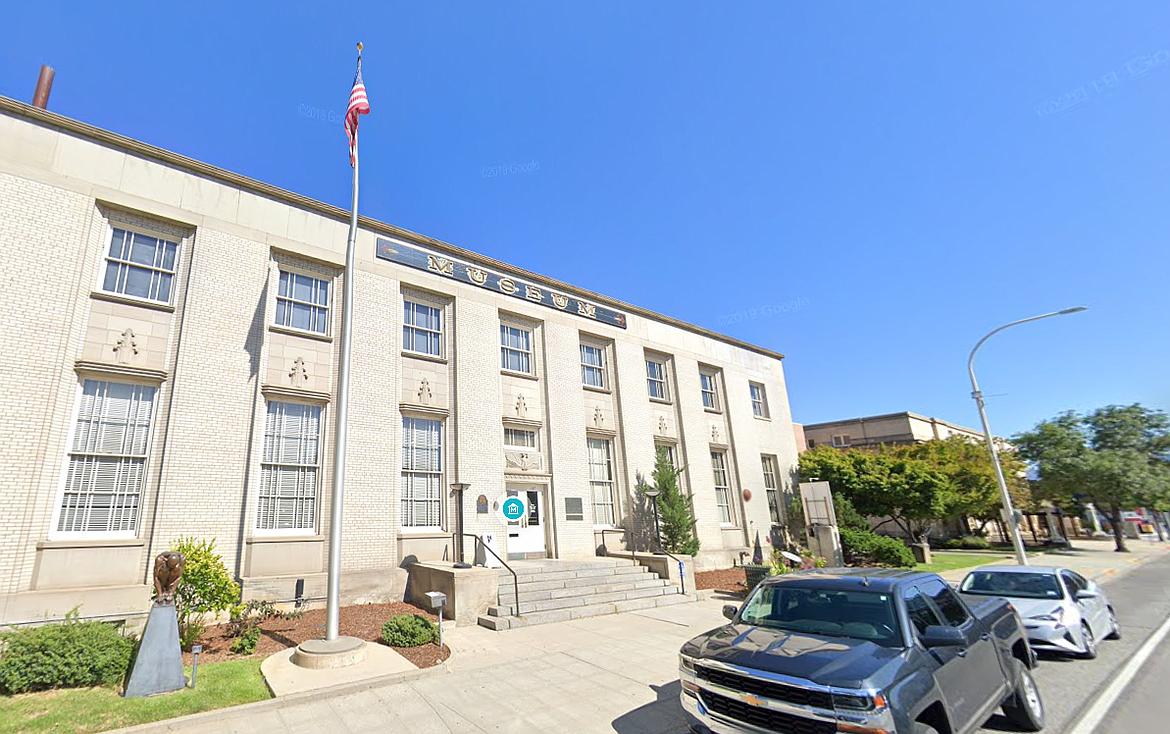Museum displays thrifted objects to examine prejudice
WENATCHEE — Consider the flesh-colored crayons in an exhibit at the Wenatchee Valley Museum and Cultural Center (WVMCC): from 1903 the pinkish brown is the only flesh tint, which was renamed "pink beige" in 1949 and then renamed "peach." It wasn't until 1992 that Crayola launched the first multicultural colors to represent a wider range of skin colors. And what of the burnt sienna color called Indian Red? Could something so seemingly innocuous be reinforcing prejudice?
Showing through March, the current "Sorting Out Race" exhibit came to the WVMCC from the Kauffman Museum at Bethel College in Kansas. The items were not curated from a traditional museum collection, but rather picked up from thrift stores along the way.
WVMCC Curator of Exhibits Kasey Koski said it is "a really wonderful, approachable concept for an exhibit on race" because no one is put in possession of things or put on the spot. She said, "There's a lot of examples of seemingly really innocent things that maybe we could stop this flow of caricatures and such if we considered sorting these things out."
Two examples from the exhibit are mariachi players printed on a tablecloth and harvest decorations showing Native Americans. Koski said, "If that's not from your culture, would you buy it? And if it is from your culture, would you find it offensive?"
A display of marketing materials might also perpetuate racist stereotypes, such as those from: Quaker oatmeal, Land O'Lakes butter, Chiquita bananas, Uncle Ben's rice, Red Man chewing tobacco, Lucky Charms and Aunt Jemima syrup.
Koski said of the museum's recent Martin Luther King Jr. Multicultural Festival, "I had some really positive feedback that day from people saying, 'This is a really new thing to see in Wenatchee, this is something we don't get exposure to very often.'"
She said the museum's primary guests are visitors coming in with the idea of cultural acceptance and learning new things about culture.
The "Sorting Out Race" exhibit continues upstairs at the museum in a section that has a couple different activities. One is to design a new logo for sports teams, and another to draw a new flag for your own home state to examine the symbolism in state crests, seals or flags.
Koski said the example of the Kansas state flag has "Native Americans really pushed back into the rolling hills. They've got pioneers in the midground, and a farmer in the foreground ... how would you feel about this representing your state?"
While issues of appropriation and cultural sensitivity are considered more now than in generations past, it remains relevant to the market of Halloween costumes, as just one example of an industry that can still promote stereotypes.
"In the context of recognizing that there have been challenging racial relations here in our community," said Koski, the museum holds but is sensitive to not display materials that show extreme cases of racism, such as a Japanese internment poster, photos of people in black face and photos of Klu Klux Klan members in Apple Blossom parades.
The museum once did a themed exhibit on the 102-year-old, 14-foot Skookum sign of a winking Native American, which was removed in 2022.
Koski acknowledges a public comment that the sign should be installed on the roof of the museum. Considering the additional engineering to support a sign on top of the building, she said it might only happen in the future "with full support of the community, Bluebird Inc. that owns the sign, and probably the tribes, too."
The exhibit of thrift store objects, itself, asks questions, implicitly and explicitly. At the end, it asks, "What is treasure and what is trash?"
The next exhibits moving into the museum are treasures of art made by local youth. The Regional High School Art Show is one of the museum staff's favorites, said Koski, "to see what's on the mind of our teenagers, what's going on in their brains, what are they struggling with — you always see some trends."
Judges evaluate categories of drawing, painting, photography, three-dimensional work and digital art, and the winners go on to compete at a state level.
Younger artists, fifth-grade students, get to create for the Beauty of Bronze program, which was started by the Art on the Avenues group. They are trained in the lost art of a wax casting process to create small bronze sculptures.
The kid's hands-on activity area, Coyote's Corner, is being painted with a mural around all four walls by Lindsay Briedenthal since the first week of January and will be finished at the end of February. The upper portion of the room has kept the mural by Jan Cook Mack. The design company working on the remodel selected Briedenthal's proposal based on the request for some variety of animals, orchards and cityscapes that represent the region in colors of sky blue, brown and purple.



